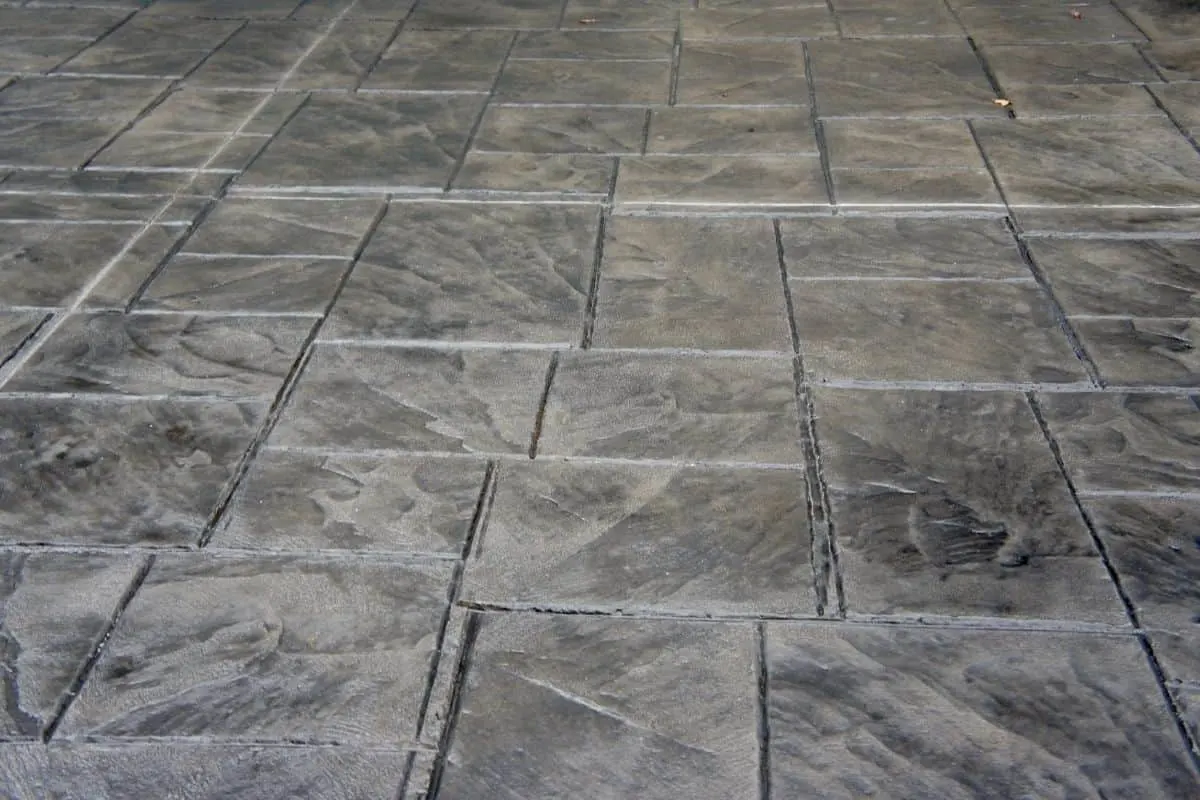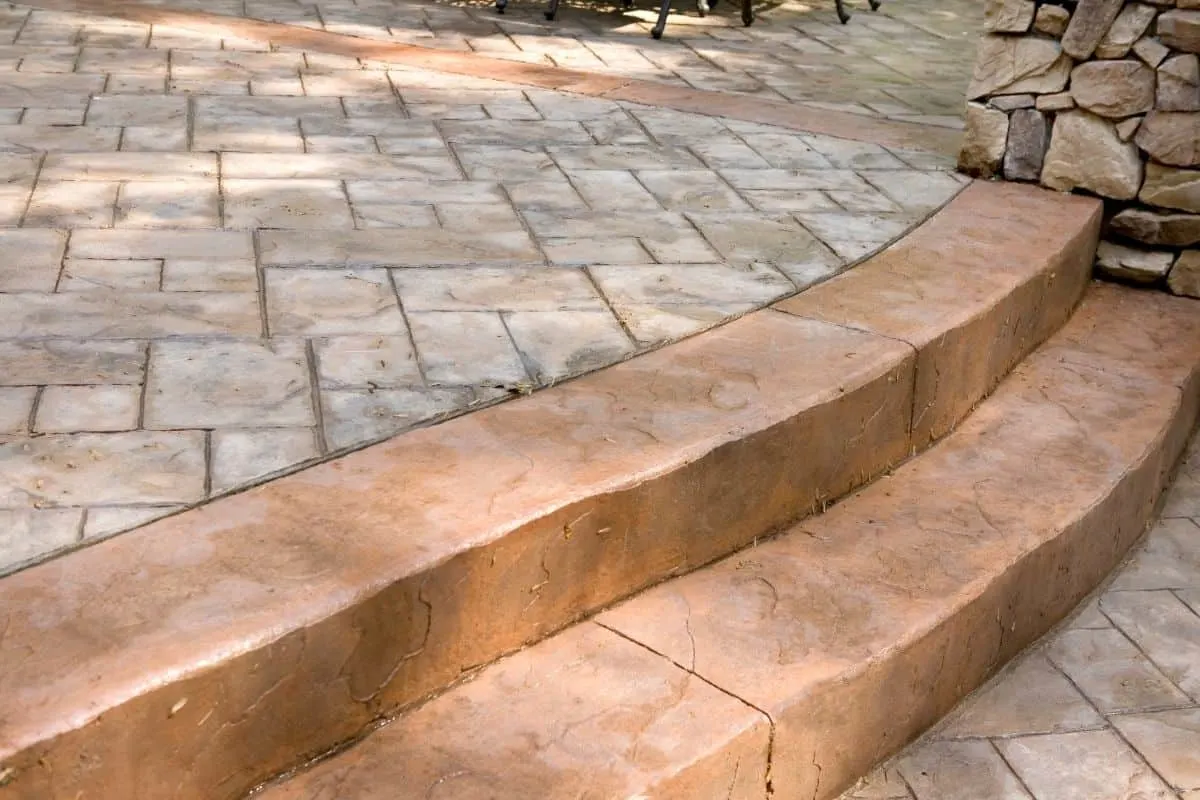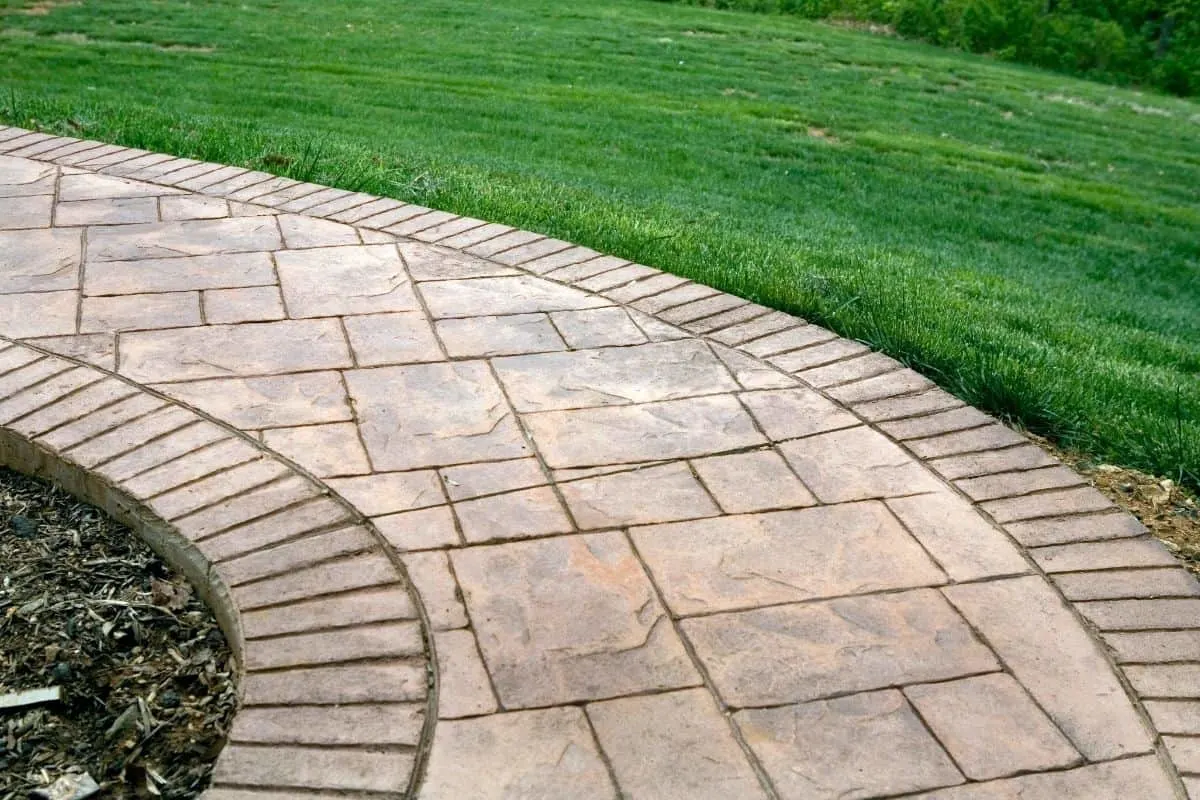Are you considering stamped concrete for your home but wondering if it will crack or fade? Given that you’ll be paying extra for the attractive look that stamping provides, this is a great question to ask!
Stamped concrete that is properly installed and sealed can last for decades before it cracks or fades. Like any exterior material, minimal wear over time is inevitable due to exposure and use.
While this is certainly good news, this isn’t the only factor that you should take into consideration when it comes to the longevity of stamped concrete.
Additional Wear Factors

The durability of stamped concrete is most dependent on the weather in your area and the weight exerted on the surfaces. Stamped concrete will crack and chip faster in areas experiencing harsh climatic conditions.
For instance, I noted a few years ago that more people living in beach towns and places that experience frequent frosting complain about cracking than people living in other parts of the country.
However, cracking does not happen overnight. You can prevent it to some extent. Preventing cracks is as easy as having it installed correctly and applying a sealer as a maintenance measure.
About stamped concrete fading, you can keep hoping for it, but it may take long before you notice. Like cracking, fading occurs naturally but will only be noticeable after a long time.
If you applied a dark coloring on the concrete, signs of fading may appear sooner.
That is not to say that stamped concrete with light colors do not fade. Just that any fading is less obvious with a lighter color than a darker one.
How long will stamped concrete last?
When installed and maintained correctly, stamped concrete should last up to 25 years.
If the stamped concrete slabs have equal depth across the paved area and were stamped when slightly dry but malleable, 25 years is average.
However, you may need to replace the concrete before the end of this time if the stamped area bears a lot of weight with time — for instance, a driveway.
Fixing cracked stamped concrete

If the stamped concrete on your patio has signs of cracking, then you better start planning on how to fix it. And what is the best fix for the cracks? Resealing is the process of renewing stamped concrete, making it look new or more appealing.
The process is useful for both cracked concrete and one that is fading or flaking off. And how much of the sealer should I use? I get this question very often, and it surprises me that even some people who have been in the trade sometimes get things wrong.
In the first place, the market has different types and brands of sealers. Luckily, most of the manufacturers indicate the area that a gallon of the sealer can cover on the container. Therefore, I recommend that everybody reads the instructions on the can.
And if the stated value is 350 square feet, then let it be. Did you know applying more sealer than needed could leave the stamped concrete looking worse?
Now you know, and I hope you will not attempt to use a gallon rated 350 square feet on a 200 square foot pool deck.
Additionally, when applying the sealer, I recommend that you first test which type was used initially.
Sealer types are incompatible, and you apply a solvent-based sealer where a water-based sealer was previously used, you may lose business and have angry clients owing to the outcome.
How often do you reseal stamped concrete?
There is no standard duration, after which you must reseal stamped concrete. However, I always advise homeowners and stamped concrete contractors to check their work after two and a half years.
But it does not have to be this long — or short.
Why?
Because the quality of the sealing deteriorates with the change in weather and the traffic on it.
For instance, a driveway exposed to sunlight and weight may need to be checked and resealed on that needs basis rather than waiting for two or three years to lapse.
Sunlight and harsh frost may cause the surface to fade or flake off. Therefore, a patio protected from harsh sunlight may take up to four years before needing service.
Are pavers better than stamped concrete?
I have heard people compare stamped concrete to pavers, and many want to know what is better.
Unfortunately, the two have more similarities than differences, and therefore, the conversation can go on forever.
First, people ought to know that the name concrete in “stamped concrete” is not a beautifier but instead refers to the material used. Secondly, when properly, the two have almost equal life spans.
Further, installing and maintaining the two costs, nearly the same value.
People drumming for pavers refer to the low maintenance cost without considering the high upfront cost. On the other hand, the low upfront cost for stamped concrete attracts many homeowners who disregard maintenance costs.
My verdict on this comparison is that it is more of a personal choice. Still, I explain to my friends how either of the two fits in their environment and that pavers are cost savers eventually, but stamped concrete looks elegant.
What are the advantages of stamped concrete?
Installing stamped concrete has an array of benefits. I will show you why many people would choose them over pavers.
Low upfront cost
I have already mentioned this, and I am repeating it because most people want to cut on the cost.
However, it is a viable long-term solution for a swimming pool deck, patio, or mall floor, even with the low price.
Elegance
Stamped concrete is what you want for the pathways, driveway, and patio if you are looking to add value to the landscaping you have already done.
Why?
Because it adds elegance and looks much better, especially if you choose a suitable color!
Ease of installation
Stamped concrete is more comfortable to install when compared to pavers.
First, its labor demands are much lower than you only need to pour concrete and apply a predetermined pattern. Many contractors prefer stamping to paving stones.
Minimal maintenance
You will only need minimum maintenance in two or three years. Stamped concrete can last up to 25 years without needing too much attention from you. However, this applies in areas with moderate weather and where there is average traffic.
You can extend its lifespan!
By reapplying the sealer on old stamped concrete, you give it a new life. Luckily, applying the sealer is much cheaper than redoing a bare concrete floor.
Here are just a few of the myths that you may hear about stamped concrete.
- It’s slippery
Yes. That used to be the case, but not today!
Nowadays, a contractor can only install slippery stamped concrete by choice. The case is so because technology has provided us with sealers that have a gritty feel.
- It will not last long
If somebody said this to you, kindly find them and make them explain how long is “long” to them. In my opinion, 25 years is a long time.
Do you have a picture of yourself from 25 years ago? I guess it shows you how long that can be.
- It isn’t easy to clean
Nobody wants debris and dirt on the patio. Therefore, I take the statement as an accusation that stamped concrete will harbor dirt. However, the case can only be right for people who do not like work.
Well, cleaning may call for additional effort, but it should not be difficult since you can use a light detergent, water, and a mop/brush.
- Pavers are better than stamped concrete
That sounds unfair because we can agree on how difficult it is to get anything perfect in this imperfect world. Even pavers have their downside!
Instead of generalizing, it is better to compare them objectively.
Choosing a concrete sealer for your next project
People often get it wrong when choosing sealers. In my experience, one should consider the type of project for which you are buying. In this sense, a buyer should decide whether a high gloss or natural appearance is needed.
Further, determine whether a surface sealer will work for you or a penetrating sealer is better. For instance, you should buy a penetrating sealer if it will be applied on a cracking surface.
As far as the appearance matters, you should also consider the space’s nature where you will apply the sealer. For instance, a patio and swimming pool deck could use a high gloss finish while the same would be illogical for a driveway.
If you’re curious to learn if stamped concrete can increase your home’s value, then make sure to also read my article on the topic!


